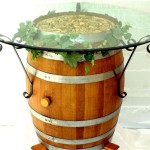Essential Aspects of Above Ground Vegetable Garden Beds
Growing vegetables in an above ground garden bed can be a rewarding and productive experience. Here are some key aspects to consider when creating and maintaining an optimal environment for your plants:
### Materials and ConstructionChoose durable materials that can withstand outdoor elements, such as pressure-treated wood, raised bed kits, or cinder blocks. Ensure the bed is well-constructed with proper drainage holes to prevent waterlogging.
### Soil SelectionFill the bed with a high-quality potting mix or garden soil amended with organic matter. Consider the specific soil requirements of the vegetables you plan to grow and adjust the soil composition accordingly.
### Dimensions and LayoutThe dimensions of the bed should accommodate the desired number and variety of plants. A 4x8 feet bed is a common size that allows for easy access and maintenance. Plan the layout to maximize sunlight exposure and provide adequate spacing between plants.
### Drainage and WateringGood drainage is crucial to prevent root rot. Drainage holes should be placed at the bottom of the bed and covered with a layer of gravel or landscape fabric. Water the plants regularly, especially during hot, dry weather, but avoid overwatering.
### Sunlight ExposureMost vegetables require at least 6 hours of direct sunlight per day. Place the bed in an area that receives ample sunlight throughout the growing season.
### Pest and Disease ManagementPractice good hygiene by removing diseased leaves and plants promptly. Use natural pest control methods, such as companion planting and organic insecticides, to minimize pests and diseases.
### Support StructuresFor tall-growing plants, such as tomatoes and beans, provide trellises or cages to support their growth and prevent them from becoming damaged by wind or pests.
### MulchingAdding a layer of mulch around the plants helps retain moisture, suppress weeds, and regulate soil temperature. Use organic materials such as straw, compost, or shredded leaves.
### Crop RotationTo prevent nutrient depletion and disease buildup, practice crop rotation by planting different types of vegetables in the same bed in subsequent growing seasons.
### Season ExtensionExtend the growing season by using cold frames or row covers to protect plants from frost. You can also plant cold-hardy vegetables, such as spinach and kale, for fall and winter harvests.

Raised Bed Garden From A Z What To Know Joe Gardener

Should I Plant My Vegetable Garden In Raised Beds

Why I Stopped Using Raised Garden Beds The Seasonal Homestead
:max_bytes(150000):strip_icc()/September-Garden-4-27714c582b0d4ceaad95c9c24aaac9d9-25fe181085014f4381c4323f8ff30f3f.jpg?strip=all)
31 Easy And Inexpensive Diy Raised Garden Bed Ideas

10 Reasons To Start A Raised Bed Vegetable Garden

Tips For A Raised Bed Vegetable Garden

How To Make A New Raised Bed Garden Step By

28 Best Diy Raised Bed Garden Ideas Designs A Piece Of Rainbow

2 Pack 8x3x1ft Galvanized Raised Garden Bed Metal Above Ground Planter Box Kit Outdoor For Vegetables Flowers Herbs Adjustable To 4 Diffe Sizes Of Rectangular Steel Bottomless Shelves Light Ivor Com

Cesicia 4 Ft L X 1 5 H Round White Galvanized Steel Raised Garden Bed Above Ground Modular Planter Boxes Set Of 2 Ang006bedwy The Home Depot








